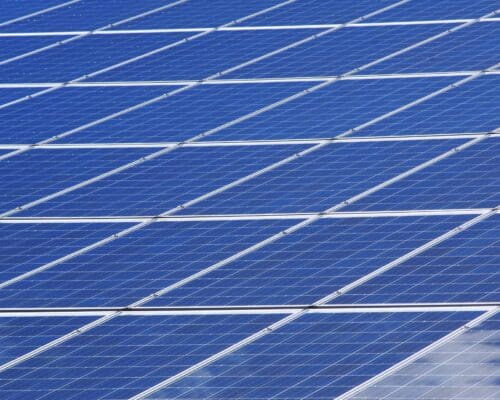Southeast Asia Prefers Renewables, But Misplaced Fears of High Costs Delay Adoption
07 November 2023 – by Viktor Tachev
The environmental issues in Southeast Asia in the past two decades have convinced it to move away from fossil fuels. Considering that the economic, environmental and societal arguments are all on the side of renewables, the only question left is: how quickly will the region transition?
The Southeast Asia Climate Outlook 2023 Survey Report: Southeast Asia Prefers Renewables, But Fears High Costs
The Southeast Asia Climate Outlook 2023 Survey Report by the Climate Change in Southeast Asia Programme at ISEAS – Yusof Ishak Institute interviewed 2,225 individuals across 10 countries to identify the sentiment regarding climate crisis’ impacts, solutions and policy strategies in the region.
The key finding is that respondents believe governments aren’t doing enough to address the climate crisis.
At the same time, governments (86.9%) are considered the most responsible for taking action against climate change. Next in line are businesses and industries (61.8%) and individuals (45.9%). National governments are also found to be the main stakeholders to bear the costs of climate change measures.
Nearly half (49.4%) of the respondents consider climate change as an immediate threat to the well-being of their countries.
The study finds that Southeast Asians’ attitudes towards the clean energy transition are generally positive.
Respondents show strong support for phasing out coal. Close to 35% want it done immediately, while 29.4% and 14.4% prefer a timeline of 2030 or 2040, respectively.
A majority of the interviewed (54.2%) say that their countries should stop building new coal power plants immediately. Respondents from leading coal consumers and producers, like Vietnam, the Philippines and Indonesia, are the strongest advocates of closing coal plants immediately. Surprisingly, the surveyed aged 16-21 are the leading supporters of building new coal plants.
The idea that switching away from fossil fuels will bring long-term economic benefits is shared by 66.5% of the respondents. Meanwhile, over half of the interviewees say that fossil fuel subsidies should be reduced.
Furthermore, 45.8% say that while natural gas is a temporary replacement for coal, countries must strive towards developing renewables.
Debunking the Myth that the Renewable Energy Transition Will Increase Costs in Southeast Asia
The survey finds that 54.2% of the respondents say that switching from fossil fuels to renewables will cause short-term economic pain. They think such a move will drive costs of living and energy prices up.
However, in reality, it is fossil fuels’ price volatility that has been causing economic hardship and fueling the high inflation in Southeast Asian nations. As a result, many countries in the region have been battling a major energy crisis and consistent blackouts affecting households and businesses.
Clean energy has already proven itself in South Asia. In the first half of 2022, solar power alone helped seven countries, including Vietnam, the Philippines and Thailand, save USD 34 billion in fossil fuel costs.
Southeast Asia Has Everything to Gain From Switching to Renewables
The ever-decreasing renewable energy technology costs directly translate to cheaper energy for end users. Today, renewables are the cheapest source of new power in countries comprising two-thirds of the global population and responsible for 90% of electricity generation, including much of Southeast Asia.
On top of that, the clean energy transition will ensure additional economic benefits. Among them are job creation, more stable power prices and indirect gains from averted losses due to climate change.
IRENA finds that the energy transition will help Southeast Asia slash power sector emissions by 75% and reduce energy costs by USD 160 billion by 2050. Avoiding the health and environmental damage caused by fossil fuels can save up to USD 1.5 trillion cumulatively by 2050.
With the short time-to-market of clean energy projects and the stable transmission networks already existing in many ASEAN countries, governments have a cheap and quickly deployable sustainable solution. Capitalising on it will cement their energy independence and empower their growing economies.
Furthermore, switching to renewables will help Southeast Asian countries ease the burden of fossil fuel subsidies on their economies. The IEA warns fossil fuel subsidies are inefficient in helping consumers and urges governments to invest in clean energy infrastructure instead. Furthermore, analysts argue that just a small portion of the fossil fuel subsidies can cover the energy transition’s costs. Moreover, countries like Indonesia and India, for example, have already successfully applied subsidy swaps. That way, they have ensured that some of the savings from fossil fuel subsidy reforms will help fund the clean energy transition.
The ASEAN Region Has Immense Clean Energy Potential
Interestingly, 16.3% of respondents say that the biggest obstacle to the decarbonisation of the region is insufficient alternative energy sources.
However, in reality, ASEAN countries all share one key characteristic: they have an abundant, untapped technical clean energy potential. IRENA finds that the region can transition from just a 19% renewable energy share in 2018 to 65% by 2050.
Southeast Asia Identifies Japan as the Climate Leader to Look Up to
Another interesting finding from the Southeast Asia Climate Outlook 2023 Survey Report is that the region sees Japan as the most influential international partner in leading global climate innovation (23.7%) and sharing their climate expertise, practical ability and technical know-how (25.8%). The European Union and China ranked second and third for both roles.
A possible explanation for that belief might be that 49.2% of the respondents used mainstream media to gather information about the energy transition. At the same time, just 12.3% used specialised climate or environmental news sites. The result was even behind conversations with family, friends and peers (14.6%).
However, the narrative that Japan holds the best interests of Southeast Asian nations at heart is being tested on multiple grounds.
While just an 18% share of offshore wind by 2035 would put Japan on track for a 90% decarbonised power sector, the country is still pushing ahead with technologies that will expand the life of fossil fuels. Among them are LNG, ammonia co-firing schemes, blue hydrogen and carbon capture and storage (CCS). Furthermore, it is considering ASEAN countries as the primary export market. Japan will fund or assist the development of ammonia co-firing and hydrogen plants in India, Indonesia, Vietnam, the Philippines, Thailand and Singapore.
Blindly Following Japan’s Strategy Can Prove Costly For Southeast Asia
There is a real risk for Southeast Asia to pay the price for Japan’s technology expansion. TransitionZero estimates that the average abatement costs for a 20% ammonia co-firing scheme across the Philippines, Malaysia, Indonesia and Thailand are around four times higher than solar and wind. The economic argument aside, other potential consequences of pursuing Japan’s technologies are energy security risks, investing in an expensive technology with little practical success, sustained high emissions and environmental impacts and derailed decarbonisation progress.
Experts describe these technologies as “Band-Aid” solutions for delaying rather than speeding up decarbonisation. Price of Oil International calls Japan’s GX strategy “a greenwashing exercise”. According to BloombergNEF, its ammonia plans are “expensive and very dirty”.
“Japan hasn’t even explained the specifics of the GX to other countries in detail, which is why they might struggle to recognise the false solutions within.”
Kimiko Hirata, founder of Kiko Network and Climate Integrate
Japan’s efforts to extend the life of fossil fuels have also isolated it in the G7, developing a reputation as a climate laggard. The country’s views have attracted heavy criticism from the rest of the group, civil society groups and businesses.
Considering Japan as the shining example to follow also contradicts that 68.7% of the ASEAN respondents would support a national carbon tax. Currently, carbon taxes in Japan are lower than in Singapore and on par with the proposals in Indonesia, one of the top coal producers globally. Japan’s rates are among the lowest, with opposition against them mounting. Furthermore, the country is now considering introducing renewable energy taxes, which will further impede the sluggish progress in decarbonising the economy.
Renewables as the Way to Go For Southeast Asia
Southeast Asia is among the most vulnerable regions to climate change. Countries like Vietnam, Myanmar, the Philippines and Thailand have been among the 10 most affected nations by climate disasters in the past 20 years globally.
As such, the region doesn’t have time to waste. And when the economic, environmental and societal arguments align, the direction the region should take is clear: the only viable option is pursuing an immediate transition. Any delay or distraction with questionable technologies will prove costly.
by Viktor Tachev
Viktor has years of experience in financial markets and energy finance, working as a marketing consultant and content creator for leading institutions, NGOs, and tech startups. He is a regular contributor to knowledge hubs and magazines, tackling the latest trends in sustainability and green energy.
Read more



